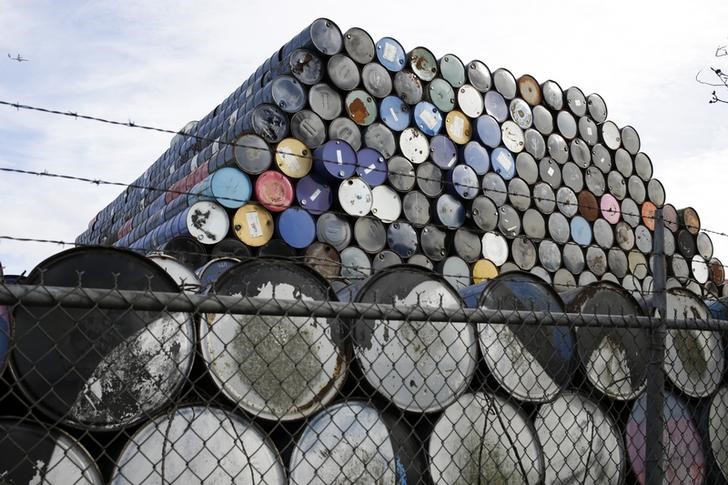Investing.com - U.S. crude oil inventories fell much more than expected last week, extending already sharp gains in prices on Wednesday.
The Energy Information Administration said in its regular weekly report that crude oil inventories plummeted by 12.79 million barrels in the week to June 21 - nearly four times the forecast draw and its largest decline since 2016 - while gasoline inventories and distillate stockpiles also unexpectedly increased.
U.S. crude prices extended already solid gains after the report, jumping 3% at $59.58 a barrel by 11:10 AM ET (15:10 GMT), compared to $59.23 prior to the publication.
London-traded Brent crude futures traded up 2.2% to $65.72 a barrel, compared to $65.31 ahead of the release.
“This humongous draw seems to be just the tonic the doctor ordered for the commodity bull,” Investing.com senior commodity analyst Barani Krishnan said. “You could almost argue that the EIA is overcompensating now for the unseasonable builds they cited in recent weeks.”
Krishnan added that the bullish backdrop provided by the supply squeeze from sanctions and U.S.-Iran tensions provided a positive narrative for OPEC.
“The only question at this point is what sort of support the Russians would lend to the Saudis for extended production cuts, because shale output and exports could continue growing here and eat into the market share of the Russians if they cut,” he said.
The G20 gathering will be in the spotlight for oil markets as Russian President Vladimir Putin meets Saudi Crown Prince Mohammed Bin Salman. They will likely discuss whether and how to extend the current production cut agreement between OPEC and other producers, of which Russia is by far the largest.
Moscow had convinced OPEC to delay the meetings initially scheduled for June 25-26 to July 1-2 in order to have time for discussion at the G20.
While waiting for a confirmation of an extension of output cuts, U.S. crude has gained more than 10% since mid-June as escalating tensions between the U.S. and Iran countered the ongoing Sino-U.S. trade conflict as the principal short-term price driver.
U.S. President Donald Trump provided further support on that front Wednesday, saying it was "absolutely possible" he would emerge from a meeting with Chinese leader Xi Jinping with a deal that would keep him from imposing tariffs he had threatened to put on China.
Although expectations for a definitive deal are low, any signs of progress would ease concerns over a potential hit to demand for oil.
